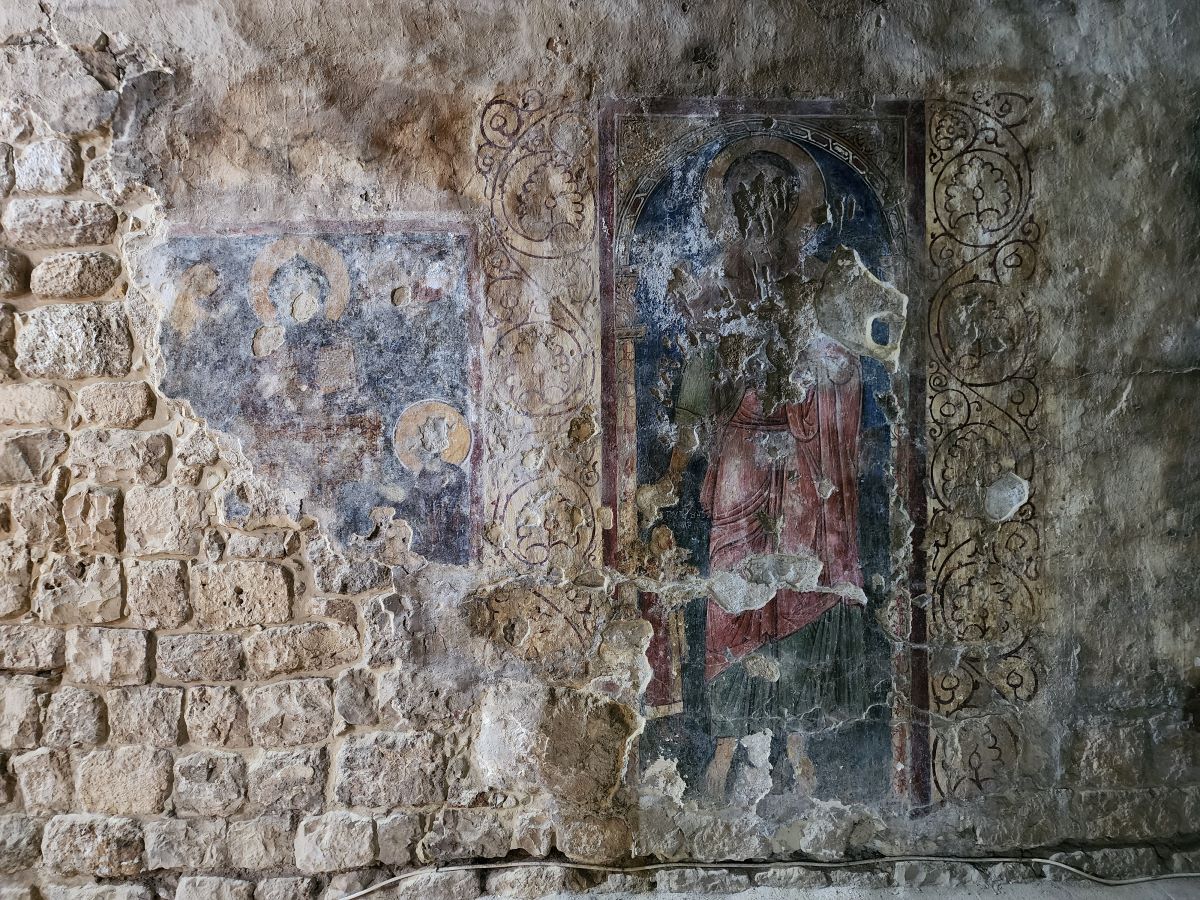Amioun village houses a crusader era church built on top of a Roman-era temple. It is the only church in Lebanon that contains Frankish-style frescoes as well as a mixture of both Greek and Latin inscriptions.
Dedication
Saint Phocas, sometimes called Phocas the Gardener or Phocas of Sinope, is venerated as a martyr by the Catholic and Eastern Orthodox Churches. His life and legend may have been a fusion of the lives of three different men of the same name: Phocas of Antioch, Phocas the bishop of Sinope, and Phocas the Gardener.
Frescoes
This church is famous for its ancient frescos, where we find in the eastern apse of the church icons of King David and his son Solomon, and the resurrection icon in which Christ appears pulling Adam from the tomb, and Eve and Abel are behind him as well.
Below are the icons of the Twelve Apostles, with Christ centered on them. And other icons on the walls of the church and on the pillars in the center of the Prophet Abraham, the holy Prophet John the Baptist, an icon of the face of Christ and another of the saint above.
One of the frescoes represents Christ descending into hell and holding out a helping hand to Adam and Eve. On the pillars are painted figures of Christ, Saint Phocas, Simon Stylites and other saints.
Structure
The church was built on the remains of a pagan temple, the foundations of which are still prominent, and you can see pieces of the circular pagan temple columns used in the construction of the church walls. Measuring 13.20 m long and 11.50 m wide, it was built in the style of a vault in the center, with a width of 4.5 m, and supported by four rectangular columns in the middle of the church, connected by arches. On either side of this vault, two ceilings are also raised in the style of a vault, but they are less wide than those in the middle, as the width is 2.10 m. The Church was exposed to many calamities, and was destroyed, burned and stolen, leaving none of its ancient contents except for its mural icons.
Karim Sokhn
Tour Operator & Tour Guide
References
https://visitamioun.weebly.com/st-phocas-church.html







